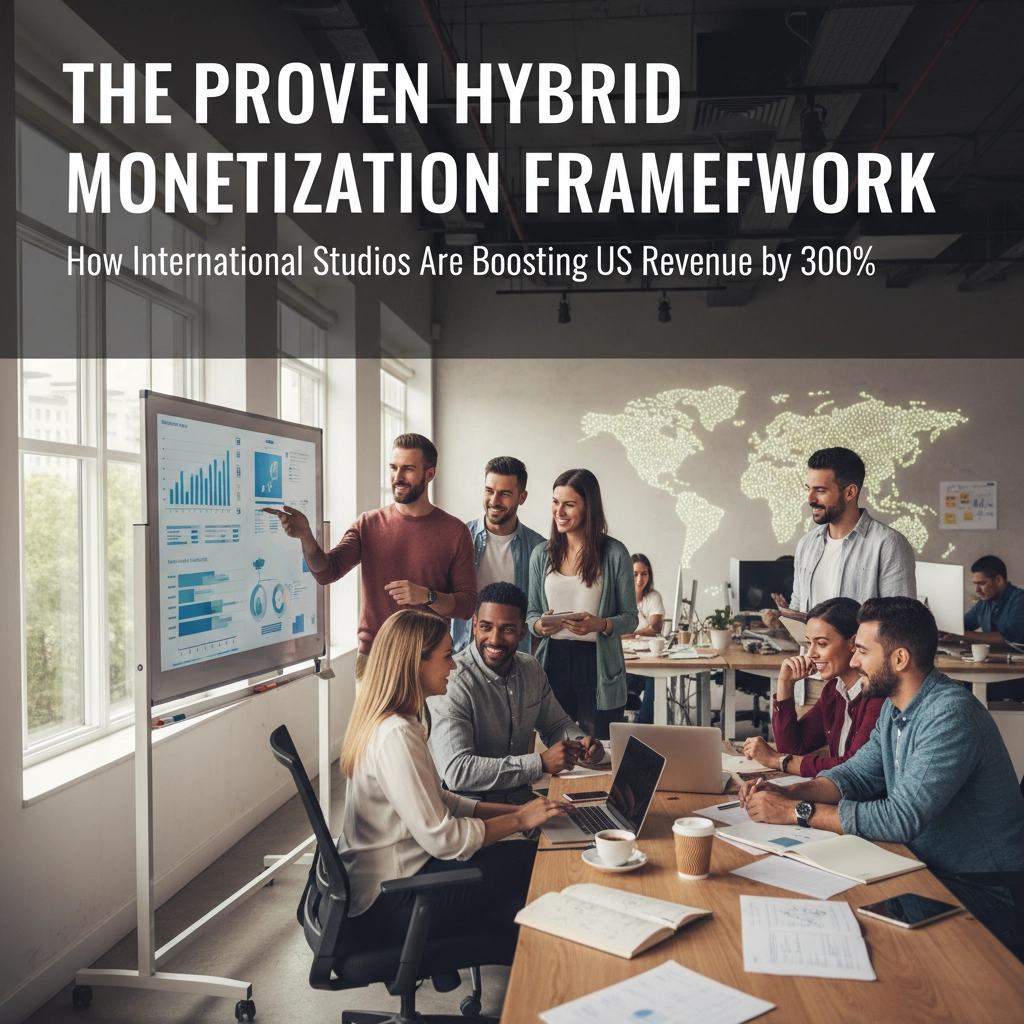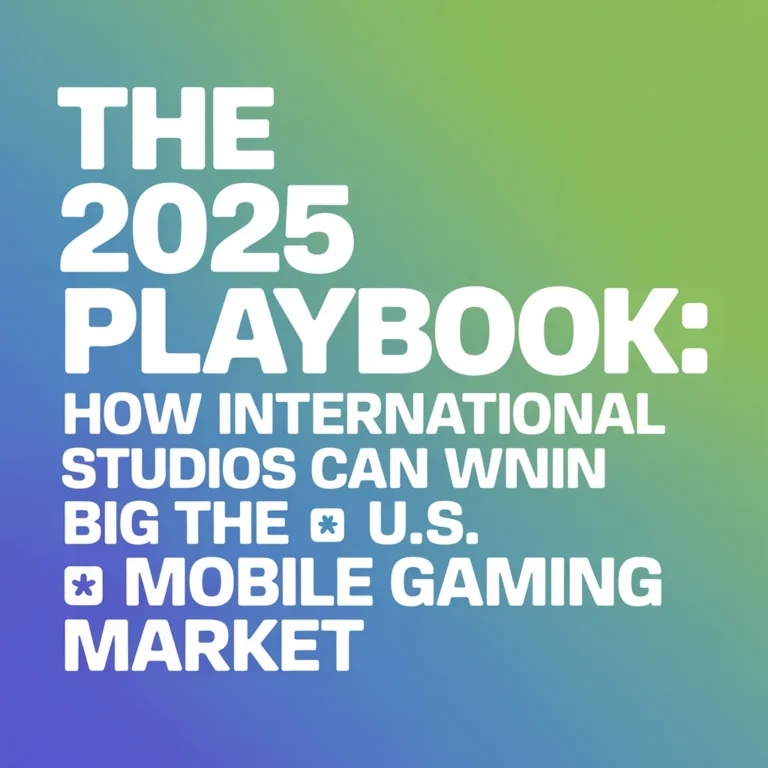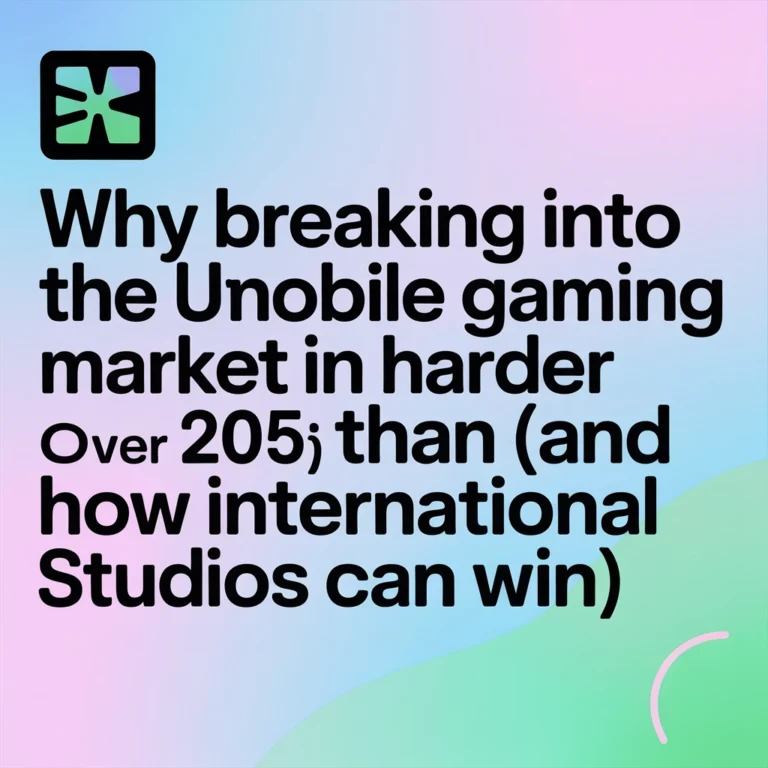The Proven Hybrid Monetization Framework: How International Studios Are Boosting US Revenue by 300%

The US mobile gaming market is ruthlessly competitive. While international studios bring incredible creativity and innovation, many struggle to crack the monetization code that American players respond to. That's where hybrid monetization comes in: and it's absolutely crushing it right now.
We're seeing international studios completely transform their US revenue by ditching the old "pick one monetization model" approach. Instead, they're implementing what we call the Proven Hybrid Monetization Framework, and the results are staggering. Studios are reporting revenue increases of 200-300% within their first year of proper implementation.
What Exactly Is Hybrid Monetization?
Think of hybrid monetization as the Swiss Army knife of revenue generation. Instead of betting everything on in-app purchases OR advertising OR subscriptions, you're strategically combining multiple monetization models within a single game.
The magic happens when you stop thinking about these models as competitors and start viewing them as complementary systems. Your free-to-play users generate ad revenue, your engaged players make in-app purchases, and your most dedicated fans subscribe to premium content. Everyone wins.

Pro Tip: Don't just throw every monetization method into your game and hope for the best. The key is understanding your player segments and matching monetization models to their specific behaviors and preferences.
Why Hybrid Models Dominate the US Market
American mobile gamers are incredibly diverse in their spending habits. Some players will happily watch ads for rewards but never make a purchase. Others avoid ads entirely but drop serious cash on premium content. Traditional single-model approaches miss massive revenue opportunities by not catering to this diversity.
Recent industry data reveals that 72% of developers and 79% of publishers are actively implementing or refining hybrid monetization strategies. This isn't just a trend: it's become the new standard for serious revenue growth.
Even more compelling: 86% of developers who added advertising to their existing in-app purchase models saw either no negative impact on IAP revenue or actually experienced increases. That's not cannibalization: that's multiplication.
The Framework: 4 Core Components
1. Strategic Layer Integration
The foundation of successful hybrid monetization is understanding how different revenue streams can actually boost each other rather than compete. Rewarded video ads, for example, can increase in-app purchases by up to 6x when implemented correctly.
Start by mapping your player journey and identifying natural monetization touchpoints. Where do players hit friction? Where are they most engaged? These moments become your monetization opportunities.
2. Player Segmentation Intelligence
Not all players are created equal, especially in the US market. You need to identify and cater to different player personas:
- Ad Engagers: Love free content, will watch ads for rewards
- Convenience Buyers: Make small purchases to skip waiting or grinding
- Power Spenders: Purchase premium content and cosmetics regularly
- Subscription Lovers: Prefer predictable monthly costs for ongoing value
Each segment responds to different monetization approaches, and your framework needs to serve them all.

3. Timing and Context Mastery
The "when" and "where" of monetization requests can make or break your revenue. US players are particularly sensitive to poorly timed interruptions.
Successful international studios have learned to present monetization opportunities at natural pause points: after level completion, during loading screens, or when players achieve milestones. The key is making monetization feel like a helpful option rather than an aggressive interruption.
Pro Tip: A/B test your monetization timing constantly. What works for one game genre or player segment might fail spectacularly for another.
4. Value Perception Engineering
This is where many international studios struggle in the US market. American players need to clearly understand the value they're receiving for their time or money. Vague benefits or complicated reward systems kill conversion rates.
Every monetization touchpoint should answer: "What's in it for me, and is it worth it?" Make the value crystal clear and immediately actionable.
Implementation: Your 90-Day Rollout Plan
Days 1-30: Foundation Building
Start with comprehensive player data analysis. Use analytics to understand current player behavior, spending patterns, and engagement points. Identify your biggest revenue opportunities and player segments.
Implement basic hybrid elements: typically starting with rewarded video ads alongside your existing monetization model. This is the safest entry point and provides immediate data on player response.
Days 31-60: Optimization and Expansion
Based on initial performance data, refine your approach and add complexity. This might mean introducing subscription options, expanding ad placements, or creating new IAP opportunities.
Focus heavily on player feedback during this phase. US players are vocal about monetization experiences, and their input is invaluable for optimization.

Days 61-90: Advanced Integration
By this point, you should have solid performance data and player insights. Now you can implement advanced hybrid strategies like cross-promotion between monetization models, personalized offers, and dynamic pricing.
This is also when you'll typically see the most dramatic revenue increases as all components work together synergistically.
Common Pitfalls International Studios Face
Overaggressive Ad Frequency: US players will abandon games that feel like constant ad bombardment. Start conservative and increase gradually based on retention data.
Cultural Monetization Assumptions: What works in Asian or European markets doesn't always translate to US player preferences. Always localize your monetization strategy, not just your game content.
Technical Integration Issues: Poor ad loading times or payment processing problems kill monetization momentum. Invest in robust technical infrastructure from day one.
Insufficient Player Communication: US players expect transparency about monetization. Clearly explain what they're buying and why it's valuable.
Measuring Success: Key Metrics That Matter
Track these essential KPIs to gauge your hybrid monetization performance:
- ARPDAU (Average Revenue Per Daily Active User): Should increase steadily as hybrid models mature
- Conversion Rate by Segment: Monitor how different player types respond to various monetization offers
- Retention Impact: Ensure monetization isn't negatively affecting player retention
- Cross-Model Performance: Track how different revenue streams influence each other
Pro Tip: Set up automated dashboards for real-time monitoring. Hybrid monetization generates complex data, and you need clear visibility to make fast optimization decisions.
The US Market Advantage
Once you nail hybrid monetization in the US market, you've essentially created a blueprint for global expansion. American players are among the most monetization-savvy in the world, so strategies that work here typically perform even better in other markets.
The framework principles: strategic integration, player segmentation, timing mastery, and value perception: are universally applicable. You're not just optimizing for one market; you're building monetization expertise that scales globally.
Your Next Move
Hybrid monetization isn't optional anymore: it's table stakes for serious revenue growth in the competitive US mobile gaming market. The studios seeing 200-300% revenue increases aren't just lucky; they're strategically implementing proven frameworks that maximize every player interaction.
Ready to transform your US market performance? At Systara, we specialize in helping international studios implement winning monetization strategies that respect player experience while maximizing revenue potential. Our team understands both the technical implementation and cultural nuances that make hybrid monetization successful in the American market.
Let's discuss your monetization strategy and unlock your game's revenue potential. The US market is waiting; and with the right hybrid approach, it's incredibly rewarding.






